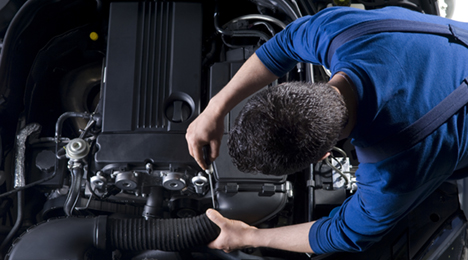Keep used-car buyers returning to service department

Used-car consumers buy service contracts because they understand their value to help offset future mechanical breakdown costs. Dealerships like customers to purchase VSCs because they help increase customer use of their service department.
However, if you want more confidence that these customers will indeed return to your dealership for vehicle maintenance and repair — and possibly purchase a new car down the road — the most productive way (the data confirms this) is to put a dealership-branded prepaid maintenance plan in their hands (and in their glovebox).
The used-car purchaser is the most likely customer to defect after purchase, so be sure to connect them to a dealer-branded PPM that is redeemable only at your dealership.
As with service contracts, many prepaid maintenance programs offer buyers the option to redeem those programs’ benefits at different service providers. As good as these plans are for consumers, they don’t tie the customer back to your dealership for plan use or future engagement.
So, be sure the plan your dealership uses actually brands your dealership — not other brands — and can’t be used at aftermarket service providers, which is certainly true with many service contracts.
Whichever option you chose to implement, make sure it does a number of critical things:
- Drives consumers to your business, and especially your service department.
- Delivers a positive experience, so customers continue to come back to your store.
- Has baked-in accountability tools to measure the lift in customer-pay dollars for each visit, so program ROI is measurable.
As a refresher, prepaid maintenance programs, or PPMs, help buyers offset the cost of everyday routine vehicle needs — oil changes, rotations, alignments, cabin filters, and similar services.
Plans the dealer can customize for the local market will have more value to customers, so be sure the plan you opt for allows you this flexibility.
Additional questions you need to ask when looking at a plan:
- Is the plan one-size-fits-all or adaptable?
- Are plan configurations available in 1-, 2- and multi-year options?
A best practice recognized by many dealers is to choose a pre-loaded maintenance plan that is offered free to vehicle purchasers. The incentives tie the buyer to that all-important first service visit. NADA has noted that 75 percent of new customers who have regular maintenance performed at their dealership become repeat purchasers/customers.
Preload 1- or 2-year programs on all new- and used-car purchases, and offer a multi-year upsell option through your F&I department for longer term retention. Provide the plan to every buyer.
The used-car purchaser is the most likely customer to defect after purchase, so be sure to connect them to a dealer-branded PPM that is redeemable only at your dealership.
I mentioned earlier that there was proof that dealer-branded PPMs drive retention. Such plans produce:
- 85 percent first-year retention, 65 percent each of the following two years
- $70 customer-pay upsell per repair order
- On average $1,105 in customer-pay service business a year with you, for the majority of the six years consumers own their vehicles today
If well-designed, PPMs will appeal to used finance and lease buyers. Here’s how these plans simplify consumers’ lives – and why they buy them:
- Routine: Plans reduced missed opportunities. A plan keeps upkeep on schedule and a vehicle operating as designed.
- Plan: Like a great habit, using prepaid maintenance plans helps ensure that motorists don’t miss critical services.
- Budget: Bankrate.com reported that most consumers could not cash flow a $500 emergency expenditure. Plan assets, both prepaid and discounted (and often rolled into a monthly car payment), save money on routine maintenance services in advance, so when needs arise, the expense is covered. Dealer-branded plans ensure those services are redeemed at the issuing dealership.
Every decision a dealer makes about an investment factors in at least two objectives: How will it streamline operations to remove waste and cost, and how will it drive service volume, retention, and thus revenue.
If a dealer isn’t evaluating purchases for their ability to achieve both goals, dealers leave potential revenue on the table. That is not the way to situate the dealership for leaner days ahead.
Ryan Williams is president of Fidelis PPM. He can be reached at ryan@getfidelis.com.

 View The Latest Edition
View The Latest Edition

